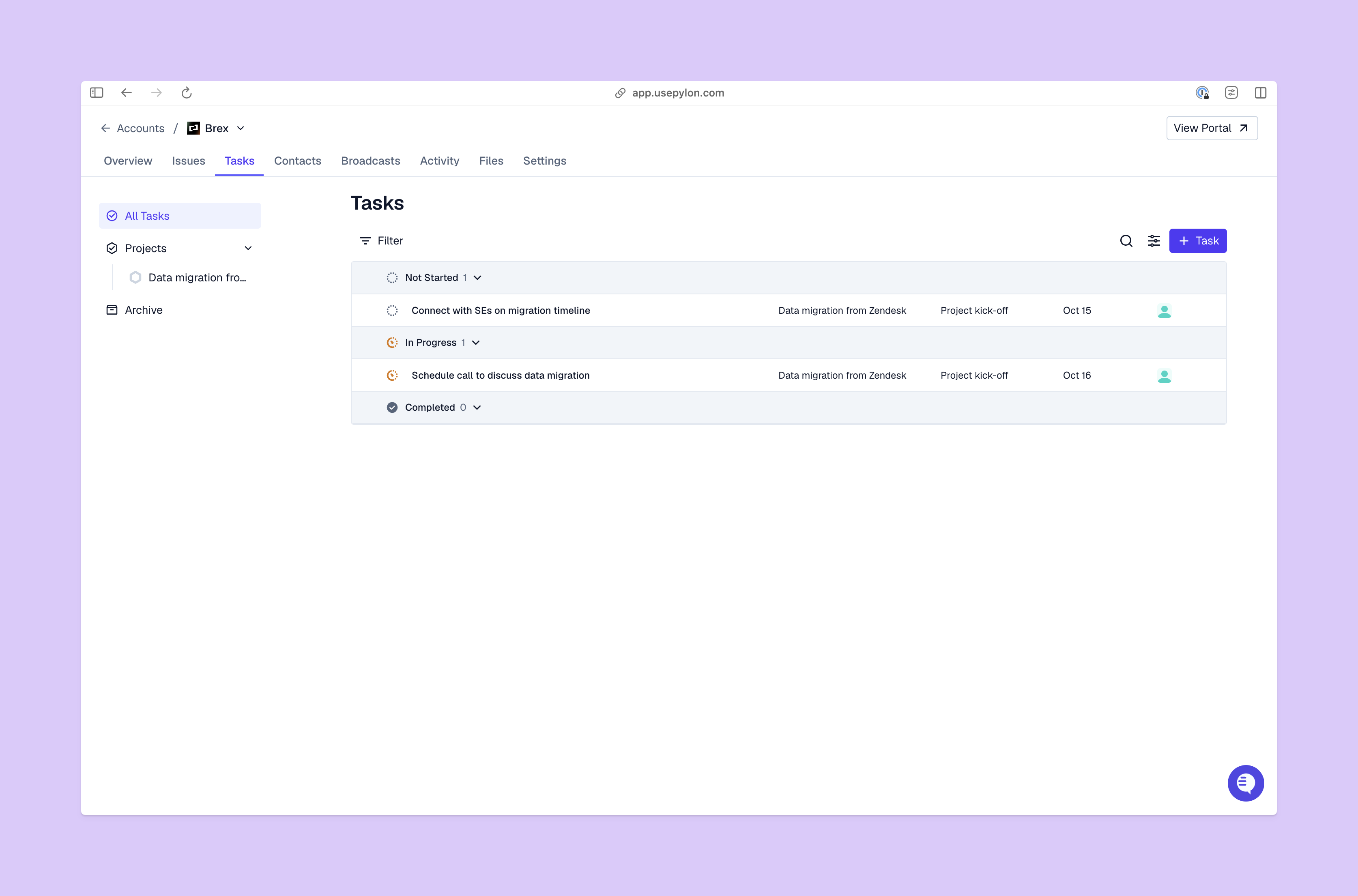Customer Success vs. Customer Support: 7 Key Differences
Discover seven key differences in customer success versus customer support roles, and how collaboration across teams can drive growth and retention.
The way you treat customers is just as important as the products or services you’re selling. From the day a customer signs a contract, your team’s ability to guide, assist, and communicate will determine how long the relationship lasts and how valuable your offering is to them.
Customer success and customer support teams often have the biggest influence in customer relationships. While they share the same goal — customer satisfaction — their approaches, timing, and responsibilities differ. Conversations about customer success versus customer support should reflect how the teams complement each other, building lasting customer loyalty and strengthening customer satisfaction.
Let’s take a closer look at what each team does, how they overlap, and how connecting the two can drive sustainable growth for your company.
What’s Customer Success?
Customer success is all about helping customers reach their usage goals for your product or service. Instead of waiting for problems to appear, customer success teams guide customers toward results and long-term satisfaction by anticipating their needs. This proactive approach is a shift in how companies think about customer relations versus customer service: It’s more about preventing issues through collaboration and insight than resolving them as they come up.
Think of a customer success manager like a mentor. Success teams help new customers get started and guide the customer’s organization through best practices for strong product adoption. They track usage trends, identify early signs of churn, and look for ways to deepen the relationship through renewals or expanded use cases.
A well-rounded customer success strategy might include customer success platforms to manage onboarding and training programs, as well as quarterly reviews and feedback loops with product teams. When the strategy works, everyone wins: Customers get consistent value, and your company earns loyalty and revenue growth that compounds over time.
What’s Customer Support?
Customer support solves specific issues as they arise. It’s the team customers reach out to when something breaks or when they need clarification. Support smooths the customer’s day-to-day experiences by removing the roadblocks that stand in the way of productivity. Customer support teams might walk users through integrations or take feature requests back to the product team. They also troubleshoot bugs after a product update.
Support teams handle questions through many channels, whether they’re resolving tickets through integrations with familiar software or directly on a platform like Slack. How quickly and effectively they answer these questions — looking at metrics like first response time, average resolution time, and customer satisfaction scores — determine the team’s success.
Modern tools make that work faster. Pylon’s AI Assistants can suggest accurate replies and reduce response times by 97%. By automating repetitive tasks, your team can focus on offering empathetic support to your customers.
Customer Success vs. Customer Support: 7 Key Differences

Although customer success and support teams both directly serve customers, they approach the relationship from different angles. Here are seven perspectives that differentiate what customer success and support teams do in their roles:
- Proactive versus reactive. Customer success anticipates challenges before they occur; customer support reacts and resolves a problem when it surfaces.
- Continuous relationship versus single interaction. Success teams build long-term relationships that span the customer lifecycle. Support teams are more likely to focus on one issue at a time.
- Organizational outcomes versus operational metrics. Customer success tracks adoption, customer retention, and account growth. Support measures speed and satisfaction.
- Evolving versus established function. Customer success has become more popular with subscription and SaaS-based business models, where ongoing engagement drives revenue and redefines B2B customer service for long-term growth. Customer support, on the other hand, has been a core business function for decades.
- Growth engine versus cost center. Success teams directly fuel renewals and expansion opportunities. Customer support keeps operations running efficiently.
- Long-term value versus immediate fixes. Customer success helps customers see measurable results and benefits months or years down the line. Support solves problems in the moment so customers can get back to work.
- Strategic insight versus technical expertise. Customer success teams use data, relationship-building, and business knowledge to guide customers toward bigger-picture goals, and customer support teams need deep product knowledge to troubleshoot effectively.
Both customer support and customer success are essential to build and maintain strong customer relationships. Support maintains day-to-day reliability, while success helps customers see lasting value. Together, they create a comprehensive post-sales experience.
Customer Success vs. Customer Support: Roles and Responsibilities
In many organizations, customer success and support teams work in tandem. By sharing common support issues or at-risk accounts, they can create a more rounded view of the customer’s needs and intervene before problems become losses. But both teams contribute something unique to the customer’s overall experience.
Here are the major differences in each role’s primary responsibilities.
Customer Success
Differentiating customer service versus customer experience comes down to customer success teams, because they see the bigger organizational picture. They track product adoption along with customer goals and account health to support a consistent customer journey. Then, success teams use this information, alongside B2B customer service strategies, to boost customer satisfaction and retention.
It’s a success team’s responsibility to schedule regular check-ins, analyze usage data, and identify areas where customers could get more out of the product. In some cases, they coordinate with sales or marketing teams to expand customer relationships.
Customer Support
Customer support representatives or engineers respond to issues, answer product questions, and ensure customers can use your product without interruption. They rely on clear communication, as well as technical knowledge and empathy, to resolve customer concerns or issues effectively. Strong customer support minimizes frustration, builds trust, and protects the brand’s reputation.
How Customer Success and Customer Support Work Together

When customer support and success teams collaborate, the experience feels seamless. A support interaction doesn’t end when the ticket’s closed — it becomes valuable context for the customer success team. The next time a customer checks in, the success manager already knows what issues were resolved and what training or updates might help prevent it from happening again.
Likewise, customer success insights make support stronger. If a success manager sees a customer’s product usage has dropped, then customer support can prepare resources or proactive outreach to re-engage them. Both teams benefit from shared dashboards, unified communication tools, and consistent customer service strategies.
Customer success and support teams can use Pylon to easily collect all the data on customer experiences in one place. This way, everyone can see the same conversations, metrics, history, and account context, so the customer’s needs don’t fall through the cracks.
Support Customer Relationships With Pylon
When customer success and support teams operate in sync, your company and your customers benefit. Fast, reliable customer support strengthens trust, while proactive customer success programs can turn one-time customers into long-term partnerships.
Pylon is the modern B2B support platform that offers true omnichannel support across Slack, Teams, email, chat, ticket forms, and more. Our AI Agents and Assistants automate busywork and reduce response times. Plus, with Account Intelligence that unifies scattered customer signals to calculate health scores and identify churn risk, we're built for customer success at scale.













